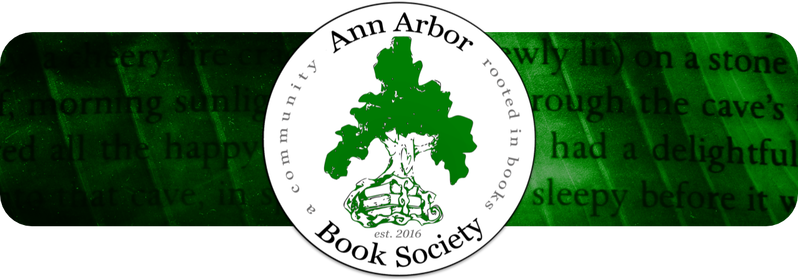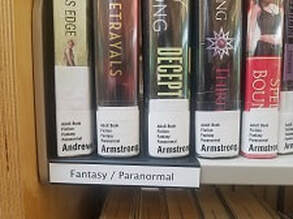Probably the most famous library system is the Dewey Decimal Classification (DDC), better known as the Dewey Decimal System. The DDC files nonfiction books by three digit numbers (plus decimals for further refinement), placing language books in the 400s and biographies in the 921s, for example. It was first published in 1876 by Melvil Dewey. It seems like a great system that most of us are used to from using our community libraries, right?
Well, there are some flaws built into the system. I run into one in particular fairly often: not all books on the same topic are, in fact, grouped together. When I look up “gluten free” in the Ann Arbor District Library (AADL)’s catalog, for instance, I find books in the 613s, 616s, and 641s. Books about the Crusades are in the 909s, 940s, and 956s, and I found one under 201, a real outlier. Speaking of the 200s, 200 through 289 are devoted to Christianity while the 290s are set aside for every other religion in the world. (The DDC also has a history of bigotry, racism, and homophobia, which is beyond the scope of this article.)
Another system popular with academic libraries is the Library of Congress Classification (LCC), which also makes use of numbers and adds letters, as well, such as PR5562 .A1 1909 for In Memoriam by Tennyson at my alma mater Western Michigan University’s Waldo Library. As you may be able to tell from that string of alphanumerics, there is a lot of room for subcategorization in LCC, much more than a community or home library probably needs.
So what can smaller collections do? Here is where I introduce to you the Book Industry Standards and Communications (BISAC), a word-based classification system. As with the other classifications mentioned above, BISAC groups books together by topic, but rather than using numerals or alphanumerics, BISAC literally spells it out for you. Instead of 921 (DDC), you have Biographies. 973.3 (DDC) is History / United States / Civil War Period.
To users of AADL’s Westgate library branch, this may already be familiar. The Malletts Creek Branch was also recently restructured to use BISAC. You might love it, and you may well hate it. Here is why I love it: BISAC is highly browsable. The sections are alphabetized, so you find Biographies under B, and they are broken down further into types of biographies.
For example, in Biography / Entertainment & Performing Arts, you will find books on Jim Henson and Oprah Winfrey. For George Washington or James Madison, look under Biographies / Political Figures. Biography / Composers & Musicians will get you books about Nina Simone and Stevie Nicks.
If you need books on Buddhism, look under R for Religion & Spirituality, then, within that section, B for Buddhism, so the breakdown is Religion & Spirituality / Buddhism. For a related topic, try the nearby Mindfulness & Meditation shelf, also found within Religion & Spirituality (so Religion & Spirituality / Mindfulness & Meditation). The books are also filed alphabetically in their sections by the author’s last name, so Pema Chodron is followed by Sam Harris, who is then followed by Jon Kabat-Zinn, and so on.
BISAC is equally perfect for niche readers of fiction. Can’t get enough of paranormal romance, but you don’t know what books fall into that category? Try the Fiction / Romance / Paranormal section. Love cozy mysteries, but detest thrillers? The Fiction / Mystery / Cozy section was made for you. (And the Fiction / Mystery / Thrillers section, which is further divided down into General, Technological, Legal, and more, is perfect for your counterpart.) Can’t stand any science fiction that doesn’t involve time travel? There is a section for that, too (Fiction / Science Fiction / Time Travel).
The one drawback I have found to this system is that giving genre precedence over author, books by the same author are not necessarily shelved together as they might be in a library or bookstore that uses only Fiction as a heading or doesn’t break down Mystery or Romance into niche groups.
Nora Roberts, for example, has books at Westgate in both Romance / General and Romance / Paranormal, which is great if you are a general romance person and prefer to ignore paranormal romance, but if you are a fan of everything by Nora Roberts, you will have to look in multiple sections to be sure you have found all of her books. Mystery and Thriller authors suffer a similar fate.
Nicola’s Books, also located in Westgate Plaza, handles it differently. While they do use BISAC, I was told by helpful employee Alana “if an author is tagged with more than one genre, we typically will choose one and keep all of the author’s books together rather than shelve in two places.”
Do other Ann Arbor bookstores use BISAC? Megan from Bookbound told me that they don’t use BISAC to organize their shelves, “but sometimes we do look up a book’s BISAC codes to help us decide what section to put it in if we are unsure (or, more likely, if we are overthinking it).” I did the same when I was a bookbuyer at Crazy Wisdom, which, being a specialized bookstore, uses its own internal categorization system. Literati also has its own system.
Ingram, the leading supplier to independent bookstores in the US, uses BISAC, as do Barnes& Noble, Amazon, Baker & Taylor, Indigo, and several other online and brick-and-mortar stores. (Incidentally, when self-publishing through Ingram, they make you choose BISAC headings for your book. Mine is under Books / Science Fiction & Fantasy / Science Fiction / Steampunk on Amazon, but the Westgate library puts it under Fiction / Science Fiction / General because AADL doesn’t have a Steampunk section. So you can see that even within BISAC, there is some personal choice.)
With more and more libraries switching to BISAC, and two of our Ann Arbor branches already using it, it behooves us to become acquainted with this system. You may find yourself becoming a more empowered reader and consumer, branching out to new authors within a genre you enjoy who you didn’t previously know existed. Maybe your child is a picky reader and only wants books on a specific topic or in a niche genre. Using BISAC can help you help them foster a love of reading by quickly introducing them to a plethora of titles and authors in that same vein. BISAC is, at its core, another tool to finding books that we love.
To learn more about BISAC, check out: https://bisg.org/page/BISACFaQ
To read about a library’s experience switching from DDC to BISAC check here: http://publiclibrariesonline.org/2018/11/leaving-dewey-for-bisac/
--Crysta Coburn, local author and editor, AABS volunteer and AADL desk clerk

